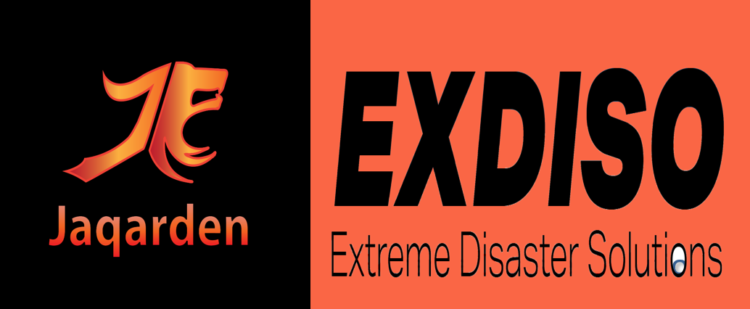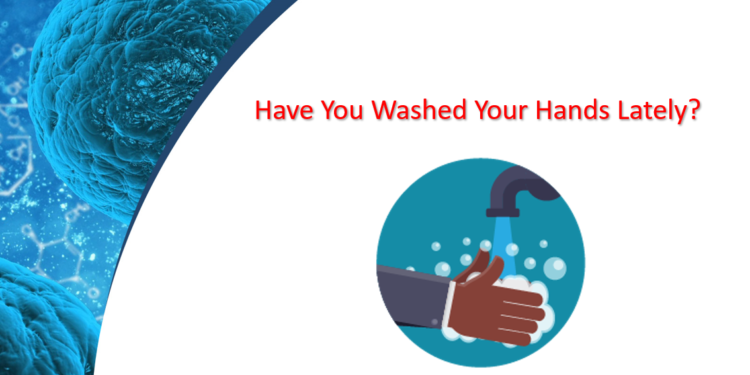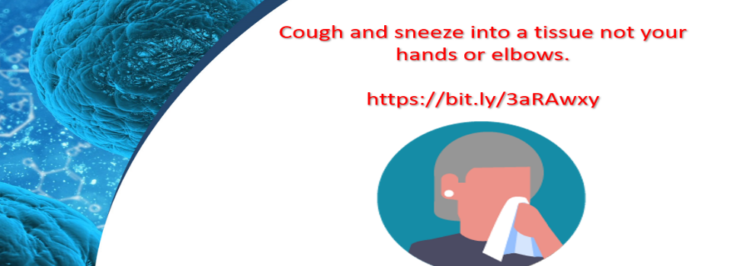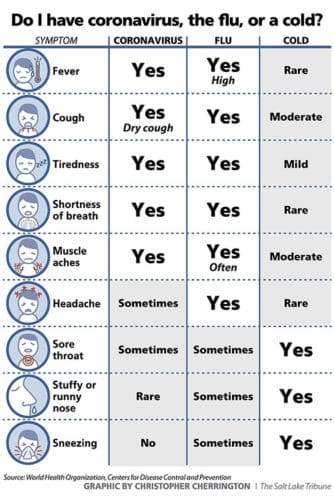Take steps now to prepare for any type of disaster to enhance the chances your business will survive it.
By Carol Jeffers
I am Carol Jeffers (CJ), Founder and CEO of Jaqarden LLC (5th Level Disaster Preparedness Through the Lens of Recovery – Consulting) and Extreme Disaster Solutions Inc. (EXDISO – Nonprofit). This article provides facts, tips, and resources to help businesses deal with and survive the current pandemic—which, given its worldwide proportions, is considered an extreme disaster.

Key takeaways:
- Address the health side of the pandemic.
- Address the business side by communicating, connecting, and pivoting.
- Reflect, regroup, and relaunch if your business closes.
- Determine an actionable disaster plan for home, staff, and for the business.
I have 35 years as a leader in disaster management, EMS, public health, and education. On the creative side, as a previous director of theater, developer of major productions and trainer of actors, I have developed large-venue, multi-site haunts. Haunts, business survival and Disaster Management a perfect blend for teaching others how to navigate the Zombie Apocalypse and COVID -19.
Watch this Session
The video recording of this session is available free on HAuNT Connect.
Follow Safety Guidelines to Address the Health Side of the Pandemic
First, let us cover the health and safety issues of this pandemic. Our action steps right now are social distancing, cleaning, sanitizing, disinfecting, and sterilizing. There is a difference between sanitizing and disinfecting.
Sanitizing refers to killing 99.99% of all germs.
Disinfection destroys 100% of a specific germ.
We are hearing a lot about masks, but many masks that people are using are not protective. The coronavirus is so small that it can pass through the fabric of these masks. The coronavirus will also pass through a standard HEPA filter. To provide protection, there must be a special, medical-grade filter on your air purifier to prevent the virus from passing through it. So, the best masks are those with multiple layers and a filtering layer— preferably of non-woven material. Any mask material or filter made of fiberglass, plastic, sheds, or carries a chemical smell is not safe!
You wearing a mask helps to minimize you touching your face and helps to mitigate spreading your germs to others. Below are resources for how to wear and care for masks; and, proper hand washing:
Washing your hands: The purple paint demonstration
The proper way to wash your hands and put on a face mask
(SMH) Mask Wearing 101: How to Properly Use & Re-use a Mask
How To Wear Face Masks Properly, And How To Clean Them | TODAY
Tips for Properly Cleaning Your Reusable Face Mask/ N95
Before anyone enters your building, you should be taking their temperature and asking basic questions like “Have you traveled recently?” and if they have been around anyone sick from the virus. Your state Department of Health has guidelines for how long someone needs to be in quarantine if they have been sick or have been near someone who is sick.

Picture from Centers for Disease Control and Prevention

Picture from Centers for Disease Control and Prevention
Address the Business Side by Communicating, Connecting and Pivoting
The customer is our foremost concern. You must develop customer-care touchpoints, which are opportunities for communication. Reach out to your customers. If you are a small business that does not keep records of customers, find a way. You might have to go through your purchase receipts to get their information. You can connect with them by email; or, you could target them through a Facebook ad or other advertisement.
It is vital to let your customers know that you are aware of them and also let them know how your business is responding to the pandemic. You want to send out a message of caring; but, you also want to keep your business in the minds of your customers until you can reopen. We are all overwhelmed with the situation and what’s going on. Businesses that are telling their customers, “Hey, we care, and we’re here,” are the businesses that customers will remember.
Send your customers something that stands out from other businesses. Think about what your business is, what you do that’s unique, then find a novel way to express your concern. If you email, maybe include a picture or a quote—your own or from a customer—about your business
Touch Base with Clients, Partners, and Customers
Can you pivot and partner with a client or agency? Every industry is feeling the pain right now; and, all your customers have pain points. What can you do to address those pain points? This is where virtual comes in. Hold a virtual workshop or virtual training of your product or connect with your clients and partners. Everybody is afraid of getting sick or that someone in their family will get sick. Everybody is fearful about the economy. Address people at these heart points.
Loss of trust is enormous right now; and, this will get worse over the next couple months. So, be transparent about your efforts to ensure cleanliness and your methods for caring for your customer. Also, respond to feedback. Even if you receive negative feedback, if you respond courteously with the facts, customers will see that you took the time to respond in a professional, factual, and helpful manner. This will give them confidence in you, and that builds trust.
Care for Your Staff
Lead with caring, and that includes your staff. Particularly if your staff is on site. You are the leader—the director or the owner—and your staff is relying on you to lead. I can’t stress that enough. Do whatever is necessary to get the resources they need to help them stay safe. Maybe prop doors open so people don’t have to touch the door handles.
Ask your employees what they need. For your staff that’s working from home, determine expectations and KPIs; but, don’t forget to show that you support them. If an employee gets sick, encourage them to go or stay home. Don’t make them feel they have to come into the office.
Help your clients and staff access mental health professionals if they need to do so; if someone gets sick themselves or someone in their home becomes sick or dies from this virus, there’s trauma.

Picture from Centers for Disease Control and Prevention

Care for Your Business
Another pain point is our revenue. How far are your funds going to take you? Where can you cut costs right now? How can you pivot to meet the current demands? This is a perfect time to plan and implement new inventions and programs.
Federal incentive programs are coming, so apply to them. Don’t think your business is too small or too big. Apply for everything and let them tell you no. Some monies you will need to pay back; but, there are options that need not be repaid. The federal government offers a grant called the Economic-Injury Disaster Loan Emergency Advance. This is a grant for small businesses in particular, with the number of employees ranging from individuals up to fewer than 500.
There are also the SBA express bridge loans. If you happen to already have financing with an SBA bridge partner, you may have access to $25,000 quickly.
Expand Your Brand
Keep your branding and message out there; and, work to improve it. Stay relevant. Stay noticeable. Get on the news cycle if you can. Get involved and let people in your community know what you are doing. Ask your fans and friends to spread the word.
If Your Business Closes, It’s not the End of the World
Typically, after any disaster, 30% to 40% of small businesses won’t open their doors again. I believe that, after this pandemic, that number will be a lot higher. You don’t want to be one of those businesses. However, if you have to close your business, you’ll be devastated, but such things are part of life. Here’s the thing: If you have to close your business, use the time to reflect. Reflect on what went well and where you had gaps in capability or capacity. Think about solutions. Think about what you can change.
Then, regroup and relaunch. Maybe you want to come back heading in the same direction; or maybe, you want to go in a new direction. Confer with your family and your friends in the industry. You may not physically get together; but, you can connect virtually for support and ideas to help you get through this period. Remind yourself that you were one of the few that created a business. Many people talk about it but never do it. You did it; and that means, it will be easier for you to create another business or relaunch the same business with improvements. We always talk about rebuilding better after a disaster. You will enter a new normal; but, you will come back stronger.
Branding and marketing strategy by a creative
Plan for Disaster with a Disaster Plan
Usually it is only when we face something like COVID-19 that we think about developing a disaster plan—or, if we have one, we wonder why it isn’t working. You need to make sure you have a good consultant that isn’t just cut and pasting the same information and giving it to everybody. More than that, you need to make sure you have a cohesive disaster plan across the entire organization.
About the Author

Carol Jeffers, “CJ,” is the Founder and CEO of Jaqarden and Extreme Disaster Solutions.
Jaqarden works with a select number of clients annually via an application process to provide: [1] Comprehensive mitigation and recovery-focused disaster consulting; [2] Executive Mentorship to C-Suite, Emergency Mangers and Incident Management Teams; and, [3] Disaster response and recovery coordination, management and support.
As part of their commitment to helping the community during COVID- 19, any business, including sole proprietorships, can schedule a consultation until May 30, 2020. Email [email protected] or Text (321) 701 – 3703
Those seeking emergency supplies (also bulk amounts) may also request the COVID – 19 emergency Supplies Catalog (Public restroom kits, health worker’s kit, masks, gloves, shields, sanitizer, etc). Text (321) 701 – 3703




